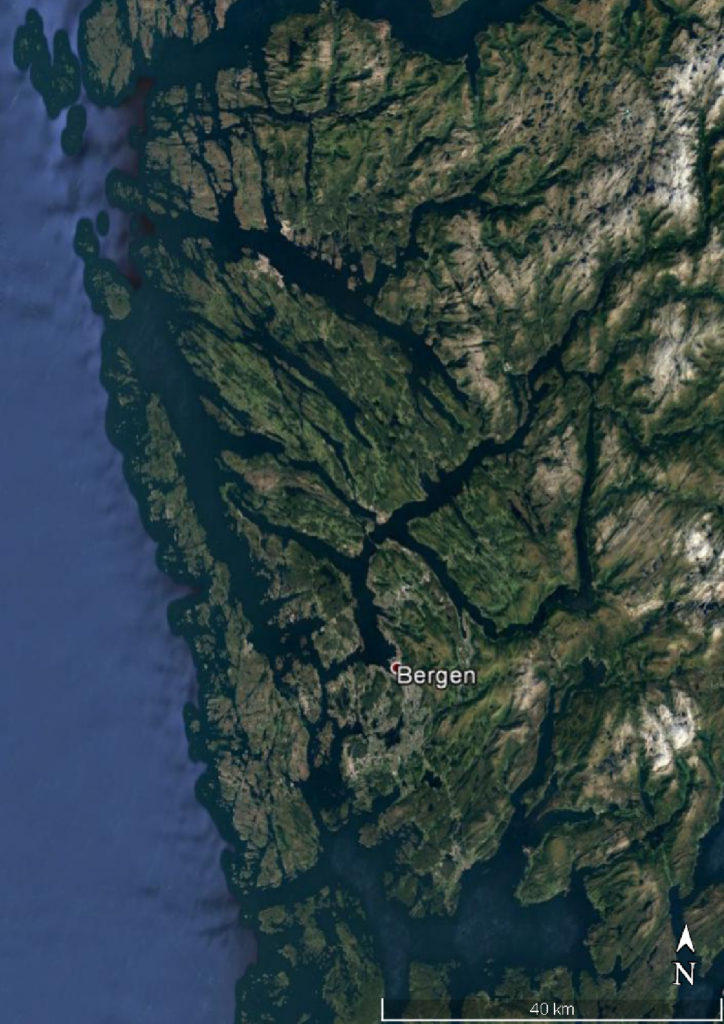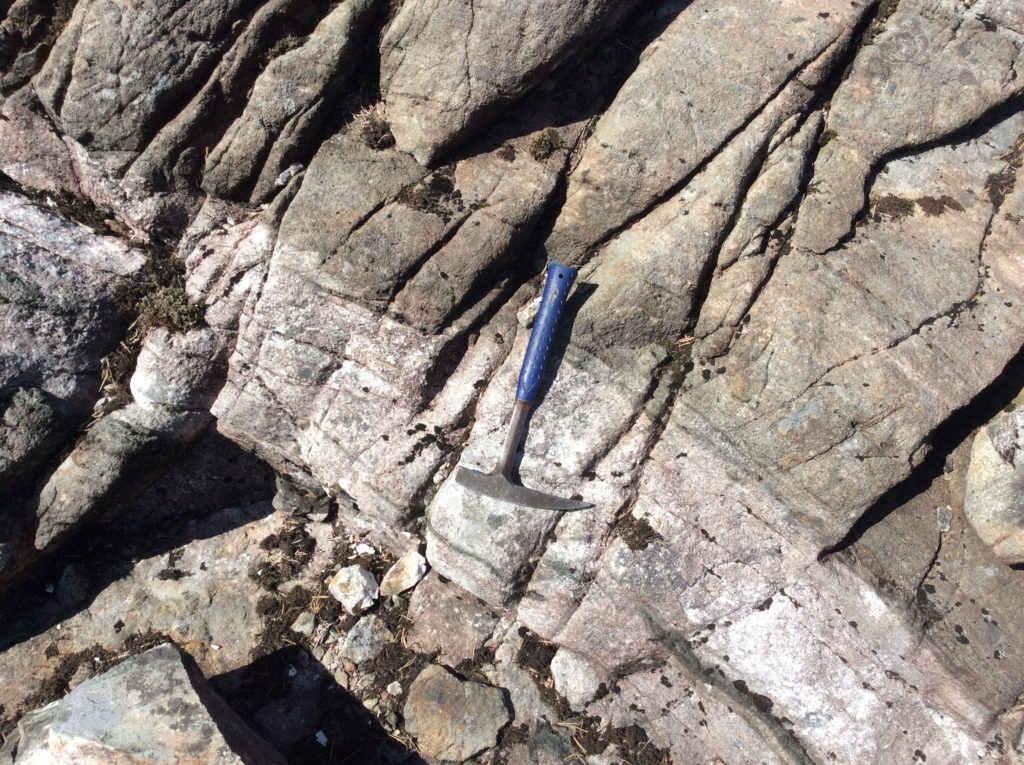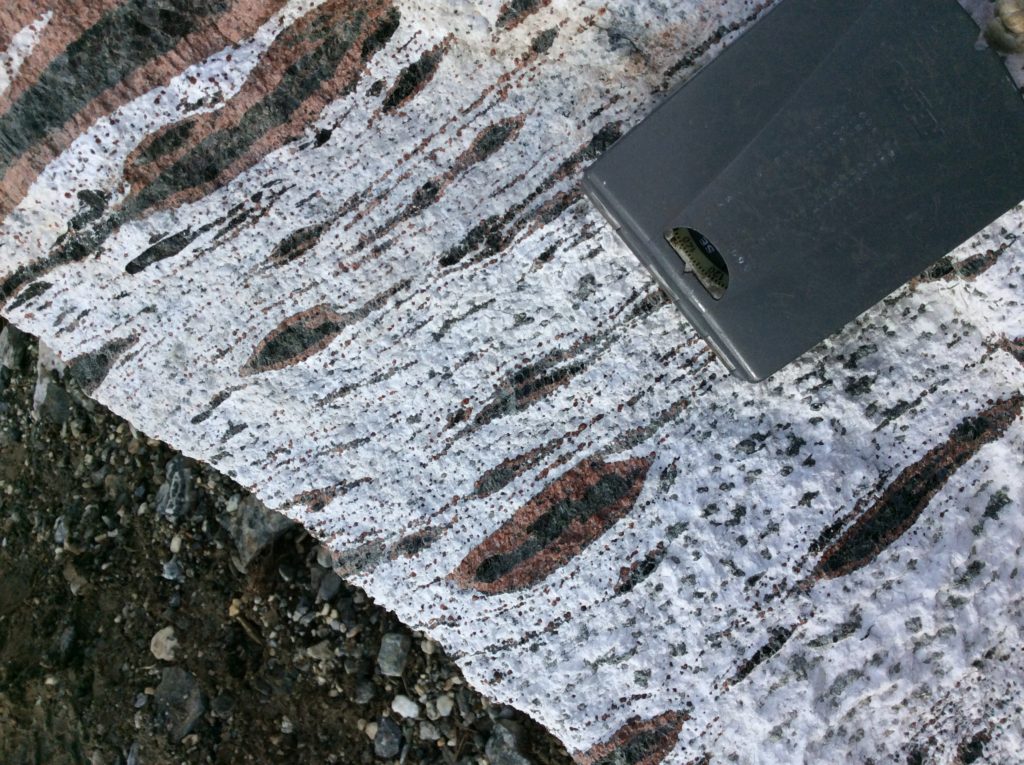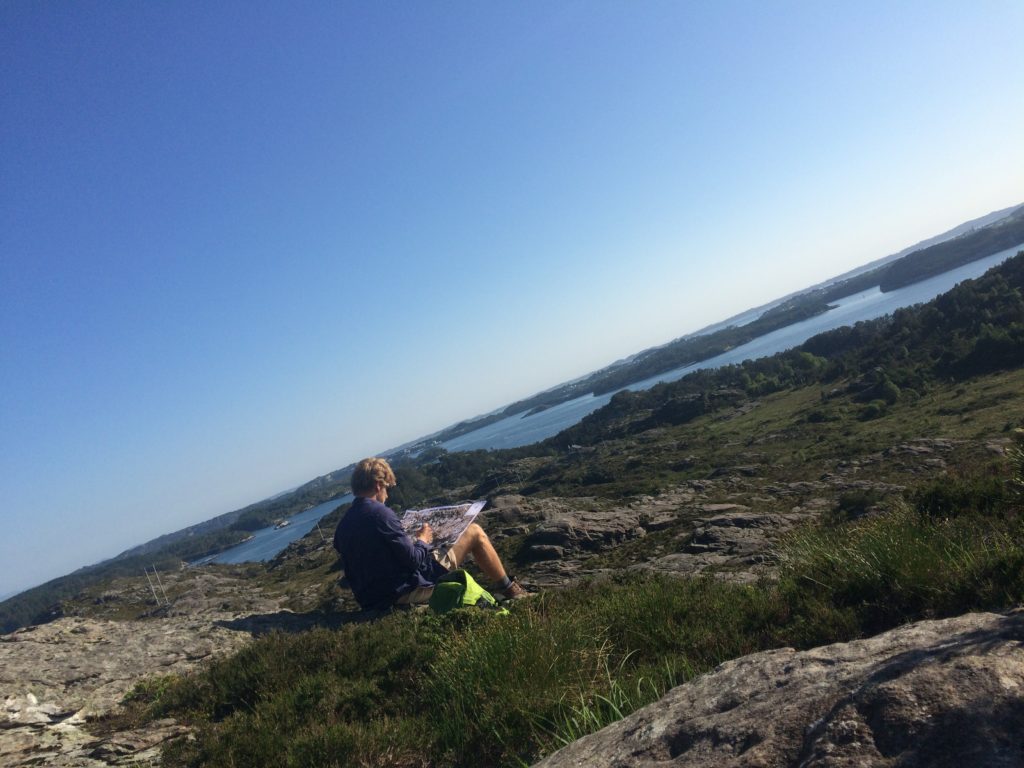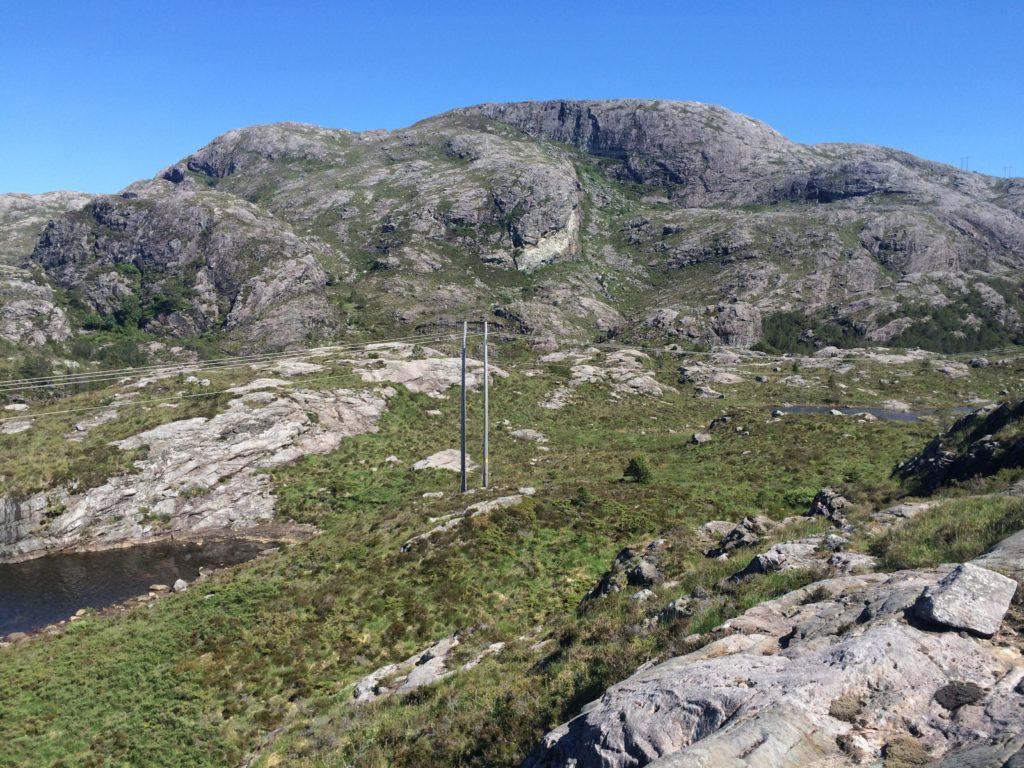Norway is well known for its fjords, narrow seaways that are bounded by steep cliffs dropping from sheer heights into even deeper waters. 80 kilometers north of Norway’s second largest city, Bergen, we find the most impressive fjords of them all – the Sognefjord being the longest and deepest. I am, however, not coming to Norway for the fjords but for a very different reason.
Flying into Bergen I look out of the plane window and see all sizes of islands with narrow and large channels between them. Looked at from space these channels and islands are shaped into an arc, also called the Bergen Arcs. This is what draws me and many fellow geologists to Bergen and the West coast of Norway in hope of unravelling the mysterious history of the beautiful and complex rocks which make up the Bergen Arcs, especially the fascinating fresh exposures on Holsnøy Island.
The rocks found on Holsnøy are, amongst others, a coronitic granulite anorthosite which has been subsequently altered to an eclogite as shown in the picture. These rocks are now exposed at the surface but have previously experienced very different conditions. Now exposed at the surface, rocks of granulite, eclogite and amphibolite facies metamorphic grades are thought to have been sitting at the base of a vast mountain range.
What interests me most is the transition of the granulitic anorthosite to an eclogite. The beautiful white, sometimes lilac rock contains black augen of clinopyroxene that are surrounded by red garnets is transformed to a green rock speckled with dark red garnets. Upon burial, deformation and hydration, the mechanically strong granulite facies rock with a mineral assemblage of plagioclase, garnet(1) and clinopyroxene(1) is metamorphosed to a much denser and weaker rock of eclogite facies containing clinopyroxene(2), garnet(2) ± zoisite, kyanite and phengite. This transformation is thought to be of major importance in the stability of high mountains where granulites provide a buoyant and strong root that upon fluid ingress and deformation is disturbed. This process of eclogitization may well be happening in present-day below mountain ranges, such as the Himalayas.
The eclogitization process and its relation to the stability of mountain ranges interest me and I am systematically mapping out the occurrence of granulite-eclogite transitions and their structural relationships in some areas on the island of Holsnøy. I venture through the bush with my mapping equipment, food and camping gear. Here and in Norway in general you don’t need to worry about water. The water in streams and rivers is fresh and there is plenty, often surprising you when you find yourself knee deep in one of the holes in the swamp. Luckily the rain has been absent during this trip and I am wearing shorts, a t-shirt, hat and sunscreen. The weather has been amazing, the mosquitoes terrible but the rocks solid.
![]() This work is licensed under a Creative Commons Attribution-NonCommercial-ShareAlike 4.0 International License.
This work is licensed under a Creative Commons Attribution-NonCommercial-ShareAlike 4.0 International License.

